The Meadow Vole (Microtus californicus) is a native member of the rodent family, and found throughout the entire coastal range of California, and inland central valleys.
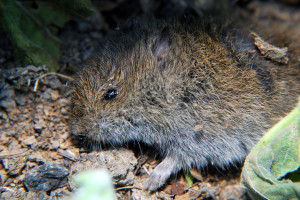
Halfway in size between a mouse and gopher, the California Meadow Vole is the scourge of the organic garden
Voles are somewhat mouse-like in appearance, approximately 5-8 inches in length, but with shorter tails than mice, and are occasionally confused with gophers. The difference is that for us, at least this year, they are significantly more populous, and far more destructive than gophers.
Vole Life History
Meadow voles thrive in habitats that are densely planted, where they can take refuge beneath ground covers and low growing shrubs, to help them avoid predation by hawks, owls, bobcats, and coyotes, and even common house cats.
Although individuals are reportedly short-lived, usually living less than 12 months, female voles can reproduce between 5-10 times per year, and average six young per litter. That’s a potential for 60 additional voles, per female, per year.
Their home range is reportedly around a quarter of an acre. They don’t hibernate, and are active all year round, although peak reproduction is usually during the spring months. They reside in networks of subterranean burrows, often with numerous voles per burrow.
Population levels fluctuate during the year, and from year to year. Some years gardeners experience very little or no vole activity, and other years, like this year for us, it becomes virtually impossible to grow anything.
Surveying Our Vole Damage
At the time we planted out the orchard we hadn’t seen any voles. We asked a number of our neighbors if voles were a concern, and the consensus was that most had never seen one. Regardless, to be safe, we planned for voles and gophers while planting out our orchard by installing trunk guards on all the young trees. Now we’re glad we did.
We didn’t observe any vole damage in our gardens or orchard last year. By late spring this year though, we noticed we could see that meadow voles were clearly running amok on the orchard slope. I even had one shoot right across the top of my boot while out weeding one afternoon. Really, I felt it! As I looked more closely, I found numerous vole holes scattered across the orchard, and at certain times of the day, multiple voles could be spied shooting cross the slope from tunnel to tunnel like furry bullets!

Voles look like rocket-powered mice as they shoot out of one tunnel, and dive into an adjacent one. They hate spending time on the surface, except to feed.
One afternoon, in mid-February, I noticed a vole poking around under the gopher guards that protect the roots of one of our apple trees, but at least it was on the outside of the guard, not inside with the roots.
I checked the other trees, and didn’t find any overt vole damage at that time. A few weeks ago though, I noticed that our Frost Peach tree was wilting. The same young tree, that after thinning most of the fruit last year, still yielded enough to make jam.
Root and trunk guards have proven to not be enough. The Frost peach will not produce peaches for jam this year.
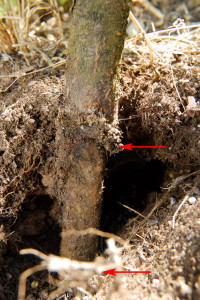
Once we excavated the soil, we found the voles has stripped 95% of the bark around the trunk of Frost BELOW the soil line (between the red arrows). Where's my shotgun?
Both this peach, and our Bosc Pear trees are now dying. All due to voles, and will need to be replaced this December, as the voles jumped not only the root guards, but also proceeded to tunnel under the trunk guards, a good few inches below the soil. We excavated the burrows, and were horrified at what we found. These vile voracious voles had succeeded in stripping the bark and cambium almost all the way around Frost, and at least half way around Bosc, spelling almost certain death for these trees.
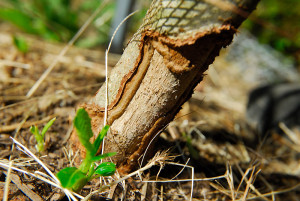
The tree is plumb, it was the photographer that was tilted. Regardless, this is the damage to the bark and cambium caused by voles to our Bosc pear earlier this spring.
The damage didn’t stop there though. After a few days of warm weather at the start of summer, we noted that some of our tomato plants were wilting excessively. We searched for evidence of blight, or fusarium wilt, but the plants seemed otherwise healthy, just wilted.
As I worked down the plants, I followed the main stem to the soil, and discovered the voles, in classic vole style, had destroyed more than 50% of the stems right at the soil line. These wounds have now scarred down, and the plants are holding on, but far from thriving.
We expect to have a significant reduction in tomato yields on those plants this year, as if the strangely cool weather hasn’t set the plants back enough.
Voles, it seems, also have an enormous, and insatiable appetite for squash plants, especially winter squashes, and in particular our heirloom Musquee de Provence plants, ALL of which have now been completely obliterated.

The sight of wilted leaves in the midst of the Musquee de Provence patch could only mean one thing...
I had planned to do a ‘2011 Great Squash Experiment’ update this week. However, in the last 10 days our squash patch has been under heavy attack. We first noted occasional gnaw marks on some of the summer squash, like our Cocozelle.
At that point we placed a number of traps in an attempt to determine exactly who was doing the damage.
As voles hate to be out in the open, the traps were covered.
Of course, we caught a varmint, it was a meadow vole.
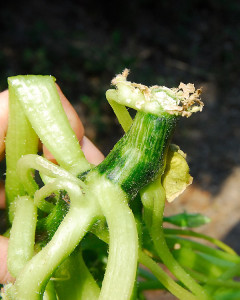
The hallmark of vole damage, over rabbit or squirrel, is that the stems are severed at the soil line. This Boston Marrow winter squash was cleanly separated from its roots by voles
Investigating the Musquee squash, we found the entire main stems had been severed at the soil line, with almost knife-like precision.
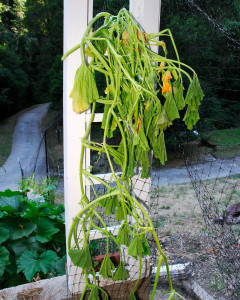
Boston Marrow, one of our most prolific squash for setting fruits, obliterated. The entire plant was severed at the root, and died.
In addition, a number of developing winter squash fruits on Boston Marrow, and Red Kuri, had been devoured, almost completely. Then we found an entire Boston Marrow had its main stem severed. The whole plant, with its 7 foot long vines, destroyed.
Vole Control Options:
Most of the literature we’ve read regarding vole control advocates the combined use of herbicides to control ground cover, and toxic baits to directly kill voles. Therein lies the problem. We don’t use herbicides, or toxic baits, and so thus, it seems we have a herculean vole problem. We also don’t have outdoor cats, as our indoor cat is more than 2 decades old, and has officially retired from mousing. He deserves it, don’t you think?
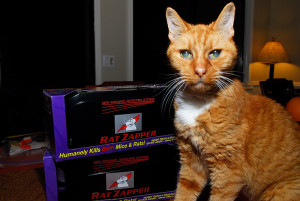
Our formerly formible Tigger, at more than 2 decades old, with cataracts, and diabetes, has officially retired from mousing. Which is unfortunate, as he was rather good at it!
We can keep some vegetative cover trimmed, stop planting cover crops, trap crops, and pull up the wildflowers we planted on the slope to curb erosion. This will decrease the available desireable vole habitat. The use of cover crops within 15 feet of any plants that need to be protected, like our fruit trees, is strongly advised against, as are layers of mulch near plants to be protected.
Trapping, in small areas, can help to reduce populations, but requires a significant investment of time setting, and checking traps daily, throughout the year.
Poison baits have been proven to be generally effective at rapidly decreasing vole populations below damaging levels, but the risks of accidentally poisoning our poultry, pets, and area wildlife is too great to even consider using rodenticides.
To date, no repellents have been proven effective against Meadow Voles. None.
Our Vole Management Methods:
It’s fair to say we’re massively frustrated. This is the first time we’ve had to deal with meadow voles. Never, in anywhere we’ve gardened have they even been an issue. Now however, they’re very much a part of our day to day reality.
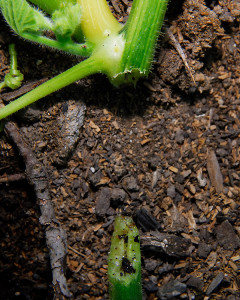
This morning this Boston Marrow squash stem was found with 4 inches of its main stem missing. A fruit was forming at the top of the photograph, but now separated from the roots, can only be used as compost
At times in recent weeks I’ve wanted to go charging across the squash patch ‘Braveheart’ style with a shovel, to engage in a satisfying round of whack-a-vole. At times I’ve wanted to scream, or cry. At times I’ve come close to wanting to quit, or move. Voles are the scourge of the organic farm and garden, and far more detrimental to crops than any other rodent we’ve ever encountered. Up until now, gopher damage, and squirrel damage, was minor in comparison to what we’re experiencing this year with meadow voles. They’re vile, they’re vicious, voracious, and deservingly vilified by those who have to live with them.
Our crops planted in raised beds, with 1/4″ wire screen bottoms, have been effective at keeping gophers out, but the voles just run right up the sides of the beds, and move right in.
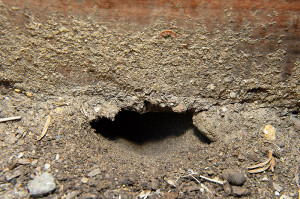
Our raised beds are all lined with 1/4" hardware cloth for gopher abatement, but this vole tunnel under our lettuce bed is still too close for comfort
Fruit trees that we thought were armored beyond breach, have been damaged beyond recovery.
The squash, and tomatoes we expect by summer’s end, may be a total loss. Any squash that is produced, we’ll consider a bonus.

Even if the voles leave the stems intact, they're still decimating the fruits of this 'Baby Pam' pumpkin
If we don’t get the vole population under control, quickly, growing any crops here may prove to be impossible.
We’ve considered acquiring a barn cat or two, but that would likely prove more deleterious to our resident song-bird and lizard populations, than to the voles, and most cats in this area don’t survive for very long due to our resident coyotes who prowl the area both day and night. I can’t condemn a cat to that sort of end.
Ironically I spent hours yesterday defending our poultry pens, especially our poults, from a brazen bobcat that refused to leave, and is in no way afraid of me, which made for some very intense moments during our turf war. Come on Bob, give us a break, we’ve got an all-you-can-eat vole buffet on the farm. Stop messing around, and catch one…hundred of them! Pulleeeeze?

We know, it will take more than one Bobcat to wipe out the vole population, but if they'd stop harassing our poults, maybe they could at least help!
This isn’t the first challenge to our gardens. Deer raided the orchard, so we bolstered fence security. Gophers killed some shrubs, and threatened fruit trees, we learned how to control them effectively. What though do we do about these blasted voles?
Baits? Not if we can avoid it. I personally understand why it’s used, really I do, and have had multiple arguments with myself in recent days over the use of baits. The answer however is still an emphatic NO.
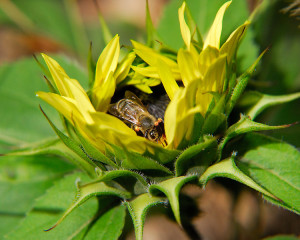
Despite a gnawed stem, and now laying flat on the ground, this sunflower is still trying to eek out a bloom
Do we stop growing vegetables? Noooooo way. I’ll plant a thousand tomato plants if it means the voles might miss just one. Cut down the orchard? Absolutely not happening. Eliminate all the native wildflower stands because they’re hiding places for these vile rodents? We might have to, at least for the short term, which saddens me greatly.
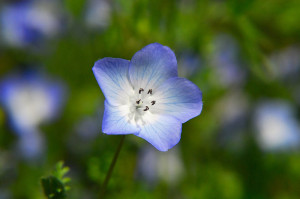
Some papers we've read suggest that plants in the genus Nemophila are a particular favorite of voles!
Do we eliminate cover crops altogether, and deprive our bees of forage? Again, not what we want, but probably sensible, at least for now.
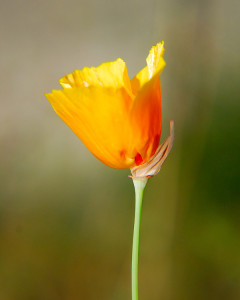
Instead of traditional cover crops, we planted native wildflowers, like this California poppy, to entice pollinators to the farm
As you may have deduced, meadow voles are a sustainable gardener/farmer’s arch nemesis. Mulches used to conserve water and mitigate erosion, invite and conceal voles. Wildflowers grown to increase pollinator diversity, attract voles, and give them protection from predators. Cover crops used as green manures, and nectar sources for our bees, attract voles, and provide protective cover for them too. A creature the size of your big toe can wreak more havoc, and do more damage than an entire herd of deer, gang of gophers (what is a assemblage of gophers called?), or even squirrels (and they ran off with about 10% of the tomato harvest last year).
Voles…this is war. The line in the sand has been drawn. When my bevy of new traps arrives this afternoon, the battle will begin, and we will not be defeated!
At least we hope not…but consider yourselves warned…

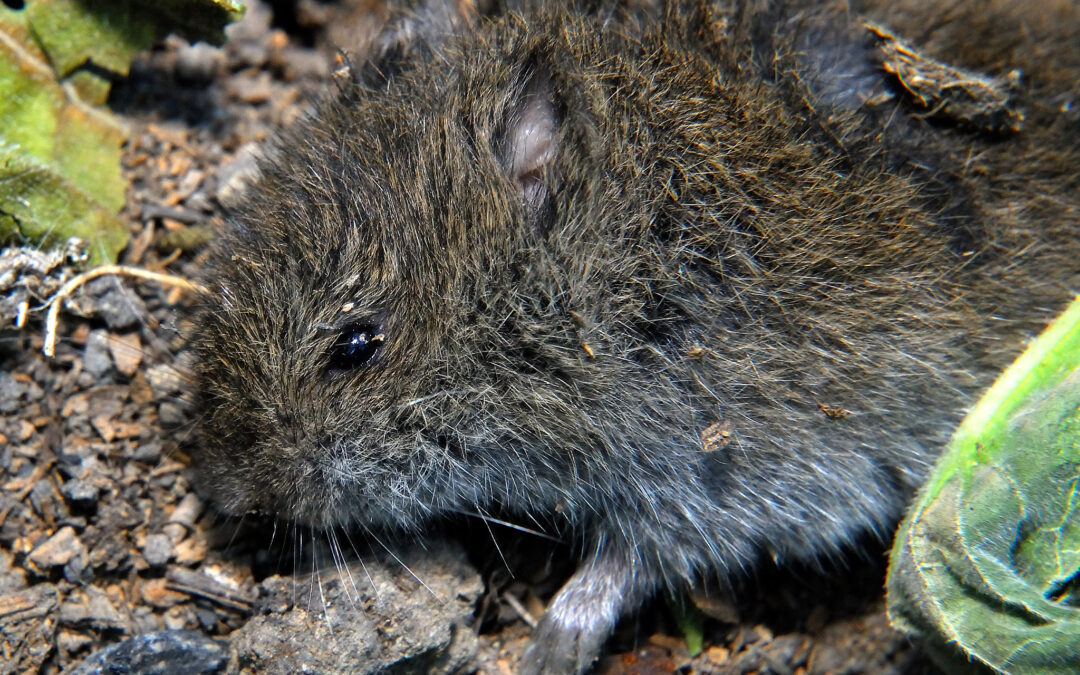
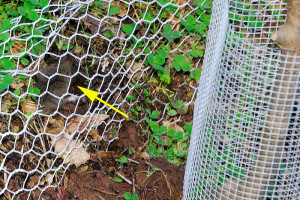
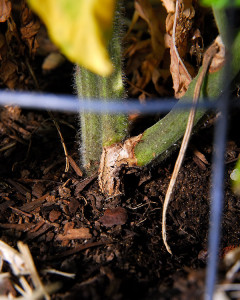

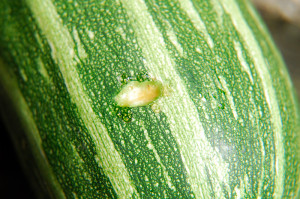
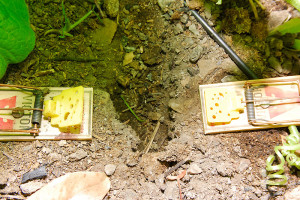

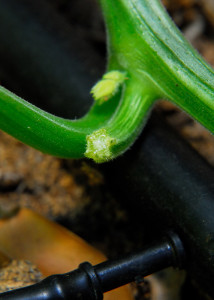
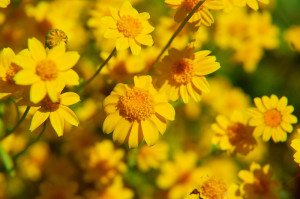
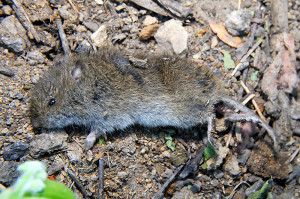
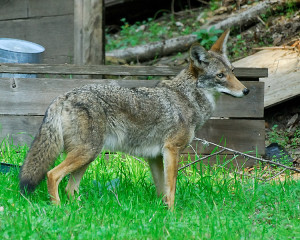

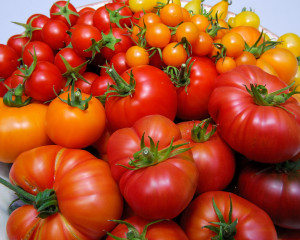








Oh, Clare. I’m so sorry to hear about the voles. I’m hoping that you are able to trap them easily. Maybe this was a “fluke” year and you won’t see them again next year. My neighbor and I believe that we’ve seen voles for the first time this summer in our gardens. They have really damaged my area that’s not protected by 1/4″ wire, but the protected beds are ok so far.
So many we’ve spoken to around here seem to be battling them for the first time this year. There are a couple of major construction projects going on at some nearby properties. I wonder if some of them were displaced from somewhere else, and that’s why we’re so overrun. That or it’s just that our wet lush spring gave them an advantage! Either way, I hope we never see vole damage on this scale again!
Hi,
Sorry to hear about your vole problem 🙁
I don’t know how common it is in the US, but have you considered trying to find someone who works Ferrets? It keeps someone in a job but also means the Voles are killed naturally – well, not as naturally as having a Bobcat take one for lunch but if I were in the same situation I think it’s the option I would take. Perhaps there’s someone who still works small terrier Dogs which were initially bred for ratting such as Beddlington Terriers, Yorkshire Terriers and so on??
Hopefully you will find a solution to your current problems soon 🙂
We had a family friend that used to hunt with Ferrets in England, years ago. Here in California though, they’re illegal. A terrier might be an option though. I wonder if a Jack Russell would do the job? My grandparents had one when I grew up, he was such a fun dog to have around.
Clare,
The coyotes make a problem for a good mouser cat. Our mouser she’s ruthless, does get a few birds. She loves killing squirrels too, voles are common fare. What about a Jack Russel or Rat Terrier that can like inside at night. Maybe a big dog to protect the smaller dog from coyotes.
Meg brought in our first tomato tonight!
Ha! Like minds, I was just thinking Jack Russell. Rat Terrier might be an option too. The voles are really active during the day, so it could be out with me in the garden…would just have to be chicken friendly though 😉
Clare,
To get a Jack Russel that is chicken friendly you would have to get a puppy and raise it along with the chickens. I would not want to even try an adult dog with the chickens. I was thinking an outside cat would go up trees to escape coyotes.
There’s way we’d trust an older dog with poultry that’s never been around them. As for cats and coyotes, I’m sure they will run up a tree, when it’s just one coyote. It’s the hunting packs that are a bigger concern. We’ve heard it in the night here, and it’s absolutely horrifying to listen to.
I’ll trade you one 10 pound woodchuck for one sack of 10 voles! This of course will not help either of us, being that we can’t catch them, and if we could…
But not to make light – it does break my heart to think of your garden being decimated. I had no idea voles could be so destructive. And I know the frustration of watching what you’ve poured all your efforts into get mowed down/gobbled up by ravenous rodents.
So: May a pack of predators be sent down from the heavens for one day and one night, to rid your garden of tiny marauders! (And they shall have no poults at the same time.)
I know we have owls here, lots of them. Most nights we can hear the Great Horned Owls chatting to each other. Maybe I should install a perch in the orchard for them to hunt from? My mother has to deal with Woodchucks, those are no fun either!
I have voles that have killed two serviceberries and a spicebush. Fortunately, one of my dogs is an excellent vole-hunter and we find them dead in the grass. But she would be no match for a bobcat or coyote. Good luck! I hope your traps work.
Oh, now that makes we want to check our spicebushes. We only planted them last fall, so they’re not very large yet.
Ah yes Voles. Love them and hate them. One day your garden is thriving and the next day you find little tunnels running all around the plants. I have had the exact same experience as you with our summer squash plants last year. This year so far the little guys have stayed in the front yard burrowing in the dichondra.
Great pictures and journal.
Maybe I need to plant some dichondra! Anything to get them out of the veggie garden!
You need some outdoor cats. This time of year mine catch at least two voles a day.
Just can’t do the outdoor cat thing, not with the coyotes around, but sometimes I wish we could!
Oh dear! What devastation these little critters can inflict! I never knew what a vole was, so NOW I know! Thanks for the info and photos!
I had no real appreciation for just how destructive they can be until this year. It’s one thing to nibble on a few fruits, you expect some loss to squirrels, birds and the like, but the fact they destroy entire plants at the roots, they’re just not playing fair! 😉
Yikes. I TOTALLY feel your pain. I’m a conservation biologist so canna’ have outdoor cats & look self in face OR use chemicals & really don’t want to kill them as it’s probably only a temporary solution (neighboring individuals will breed & fill empty niche). So, I’m banking on “mechanical exclusion.”
When I first started gardening here (land of gophers, voles, deer, cutworms, etc.) I decided to use bastard trenching, so DOUBLE dug & pitchfork deeply aerated all 5 5×14′ plots.
Then planted. Then while maturing, much got eaten. Much hair was pulled from head.
Next year, excavated ALL 5 garden plots, lined w/ chicken wire, put all dirt back (5×14′ x2-3 feet deep). (pant, pant) Planted, plants grew, many got eaten. Again. ALL edible squash (apparently they passed on most of the gourds). More hair pulled.
THIRD YEAR dug out beds AGAIN, pulled out chicken wire, re-lined with aviary wire (finer), and it sticks above ground about 4-12 inches. So far, the aviary-wire-lined beds are almost all safe last year and so far this year (one was too low a barrier), so I’m hoping that’s the answer for us.
I suppose I owe them thanks for some fitness benefits I’ve enjoyed. =)
BEST of LUCK!!!
We talked about running a hardware cloth perimeter around the entire squash plot for next year, 2 feet above ground, a foot below. It’s such a huge area though that I don’t know how feasible it really is. We can certainly add a perimeter barrier around the raised beds (the boxes are already lined on the bottom). We’re figure the squash is a loss this year, so for the rest of the season we need to think hard about how we can do this next year.
We’ve had voles here this spring too, although so far as I can tell they’ve only been snacking on my pea plants. Although yesterday I realized something had eaten one of my radishes! I think that’s just the gophers though… They are more of a problem for us, in the orchard & lawn as well as the garden. At least our dogs seem to catch the occasional one. I try to encourage gophersnakes to be in the area and hope that they cut down on the rodents. Perhaps down the road we will put up some owl next boxes nearby in the hopes that the owls will help too 🙂 Good luck!
Katy
We have gopher snakes, but there’s no way they could keep up with the vole population. Snakes only eat about once a week 😉 I think clearing as much of our slope as we can, to better expose the voles to hawks and owls might help. Honestly, I’d rather have gophers!
I feel your pain as well. This year the voles have not done any visible damage here…yet. I actually witnessed a vole last year trying to steal one of our lettuces from the greenhouse. Talk about a brazen thief – I was ready for whack-a-vole myself! I had no luck with trapping, but I didn’t have that many traps out either. However, your damage seems to be far worse than ours. I’d love to hear what does work with your trapping efforts.
I do believe Tigger has earned a break from rodent patrol in his retirement! Hopefully he can still dream about previous conquests though. 😉
Oh no! From the greenhouse? I was hoping that once we get the greenhouse up, that might be safe haven for our veggies from voles. That’s pretty bold!
Owl boxes for owls?
We built and installed some owl boxes earlier this year: https://curbstonevalley.com/blog/?p=5012
As yet though, they’re unoccupied 🙁 We are planning to build quite a few more though over winter, so they’re in place for next spring when the owls are looking for nesting places. I hope we can convince some owls to move in, although I know we have them in the woodland areas here.
Dear Clare, I am so glad we don’t have to deal with those critters here. However, a skunk is destroying our pear tree – he has a burrow under it and is eating the roots. Oh, dear. P. x
What an evil skunk! I hope he doesn’t decide to stay long. Although it’s not like you can just walk up and shoo him away 😉
Crap. Last year we had the same kind of widespread devastation from Ground Squirrels, which basically undermined our entire summer crop.
If your main concern with bait is collateral damage, you might consider a bait station, which won’t let anything in bigger than a squirrel.
What a mess. We went through the same crushing deliberations regarding poison bait, and in the end, with the complete devastation of our small garden at hand, we went with a bait.
I hope your trapping works so you can avoid this option. Best of luck.
Most bait stations protect the bait, but allow the animal to leave, and it takes multiple feedings to be effective. I’m less concerned with keeping bait safe (in that I know we can do that), than I am about secondary toxicities (our dogs, or hawks consuming baited animals as they’re easy meals). It may still come to baiting, but we’ll try absolutely everything else first. It was much simpler before the voles moved in! 😉
Oh Clare I’m so sorry to read of this. I can just imagine how frustrated you are with those dreadful little creatures and the difficult decisions you will have to make in detering them. You’ve created such a haven at Curbstone no wonder they want to make it their home. I can’t believe how much damage they have done to those trees. I hope these new traps will work for you and I applaud your fighting spirit.
We couldn’t believe the damage either. I’m sure they can read our ‘Certified Wildlife Habitat’ sign. I can live with a few voles, but right now it feels like every vole in the county has moved in! Now we just need more owls! 😛
Oh boy, that’s distressing news. I think the wet winter contributed – I’ve had more trouble with just about any kind of critter as well. Hope balance will be restored, somehow.
I think the soggy winter and spring didn’t help. I’m amazed at how much green forage is still around, even in areas that receive no water here. The voles are definitely not starving this year!
Last year I was catching more than one vole per day (per trap!) using plain rat traps, baited with cherry tomatoes. If you place the trap in a vole run, it might not even need to be baited.
Maybe we should bait ours with squash 😉 The runs are difficult to find in the squash patch because there’s no grass or ground cover, although we have traps in obvious runs at the edge of the orchard. We’ll try baiting with a little apple and see if that entices them!
I feel your frustration, Clare. This is one member of the rodent family that I haven’t had to deal with — and it makes my skirmishes with the woodchucks (now under control by the resident fox family) look very mild indeed. I hope your bobcats stop trying to freeload and get to work soon!
We don’t have foxes, but I can hear a red-shouldered hawk screeching outside the window this morning. Hopefully they’re doing their part, even if the bobcats are slacking 😉
Yikes! I’m so sorry things have gotten so bad with the voles. I consider myself a reasonable person but my bouts with gophers have taken me to a level of antipathy toward the local wildlife that’s surprised and astonished me. Your vole menace is way worse than my little gopher infestation. I wish you courage.
We thought our gophers were bad, until we met the voles. Voles are known to usurp gopher tunnels, so it’s possible we set ourselves up for this by trapping our gophers last year. The voles simply moved into an empty niche. I think I’m going to welcome the gophers back, they’re just not even half as destructive as these vile little rodents!
Faced with the alternatives you have,I think I’d be going after the bait. Locals here put it in a ‘t’ pipe with an entrance the size of the animal they’re targeting. Bigger ones can’t reach in.
Our neighbor up at the top has tons of cats. yes, she’s a ‘cat lady’. There are several ‘outside’ cats of hers that we’ve seen for over two years who manage to climb trees when coyotes come, I guess. I never attributed our lack of gophers to them before, but I bet they affect the numbers. Another trick from locals, is to feed young cats bits of (yuk)freshly dead animals to get them used to eating wild.
A life on a farm for a cat could be a better alternative to a short one in a shelter.
I think I’d try a cat before I tried bait. I can stop non-target species from reaching the bait, but I can’t stop them from reaching the poisoned rodents.
Before that though, we’re thinking of putting up a large t-perch in the orchard for the hawks and owls to land on. We’ve seen various hawks try to perch on the deer fence posts, but it’s a bit precarious up there. Perhaps if we give them a landing spot to hunt from that’s closer to the vole problem it might help. Worth a try at least!